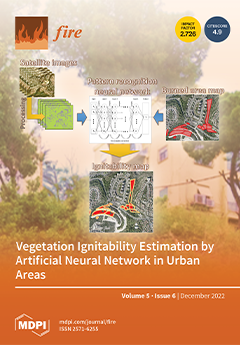When forest fires occur, highly complex effects on soil properties and hydrological processes are activated. However, in countries such as Iran, these consequences are not widely studied and there is a lack of studies. Therefore, the main aim of this study was to
[...] Read more.
When forest fires occur, highly complex effects on soil properties and hydrological processes are activated. However, in countries such as Iran, these consequences are not widely studied and there is a lack of studies. Therefore, the main aim of this study was to investigate the effects of wildfire on soil quality characteristics in a representative forest area located in the Hyrcanian forests, specifically, in the Zarrinabad watershed of Sari. For this purpose, four different sites, including unburnt natural (UNF), burned natural (BNF), unburnt plantation (UPF), and burned plantation forests (BPF) were selected. Soil sampling was performed at each site using the random, systematic method at a depth from 0 to 30 cm. To investigate the effects of fire on physical and chemical properties indicators, 10 plots with dimensions of 0.5 × 0.5 m were placed at a distance of 1.5 m from each other at each site. Soil samples were transported to the laboratory and their physical and chemical properties were determined. The results showed that the percentage of sand, silt, aggregate stability, soil hydrophobicity, organic carbon, organic matter, soil total nitrogen, absorbable potassium and phosphorus, electrical conductivity, and pH, increased significantly when the soil surface is burned (
p ≤ 0.01,
p ≤ 0.05). However, clay percentage, initial, final, and average infiltration in the burned areas showed a decreasing trend in comparison with other forest statuses. Furthermore, no significant effects were observed on the true and bulk density, porosity, and soil moisture (
p ≥ 0.05). These findings demonstrate that forest fire effects in Iran must be considered as a key topic for land managers because soil properties and hydrological processes are drastically modified, and land degradation could be irreparably activated.
Full article





